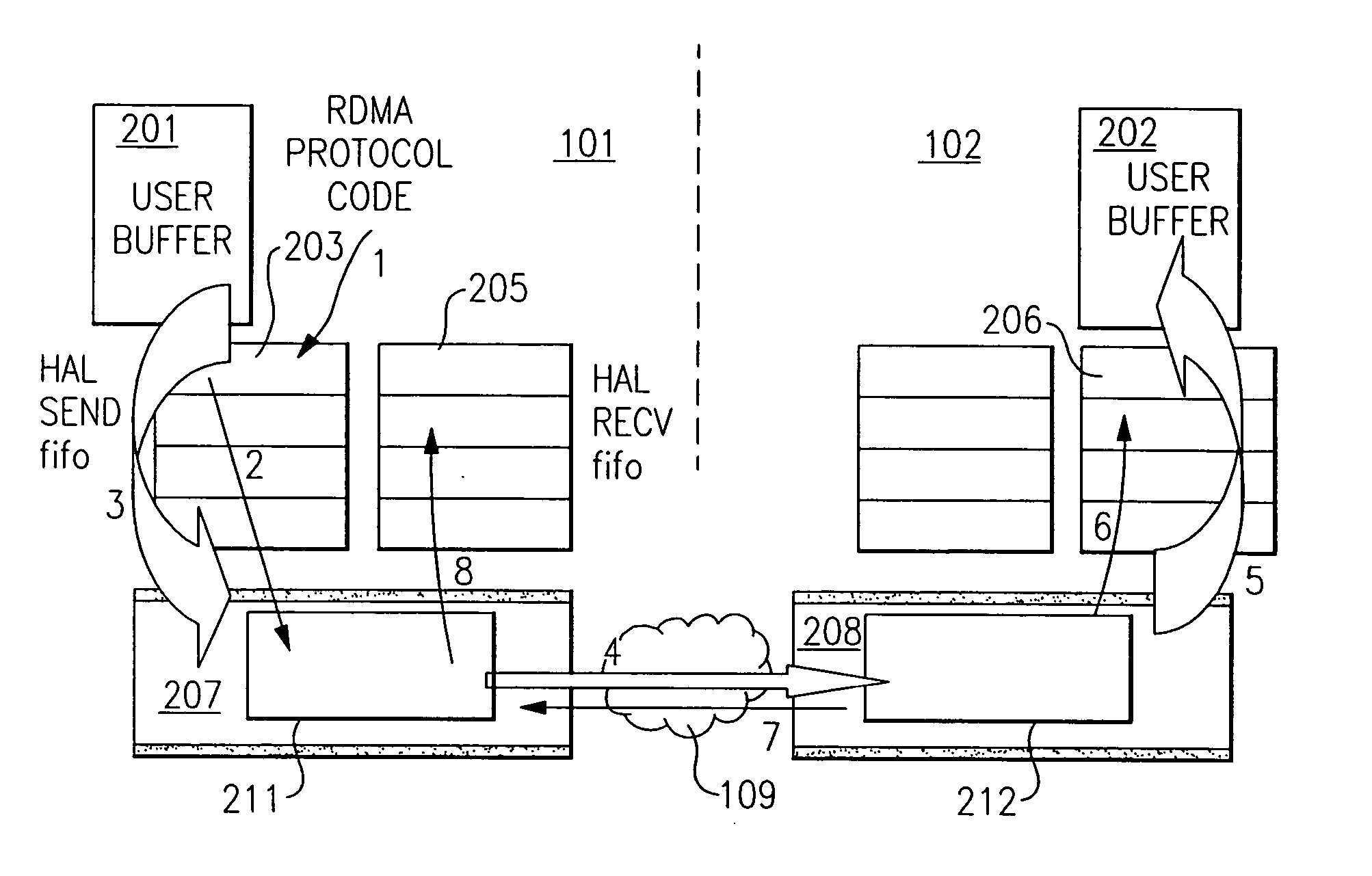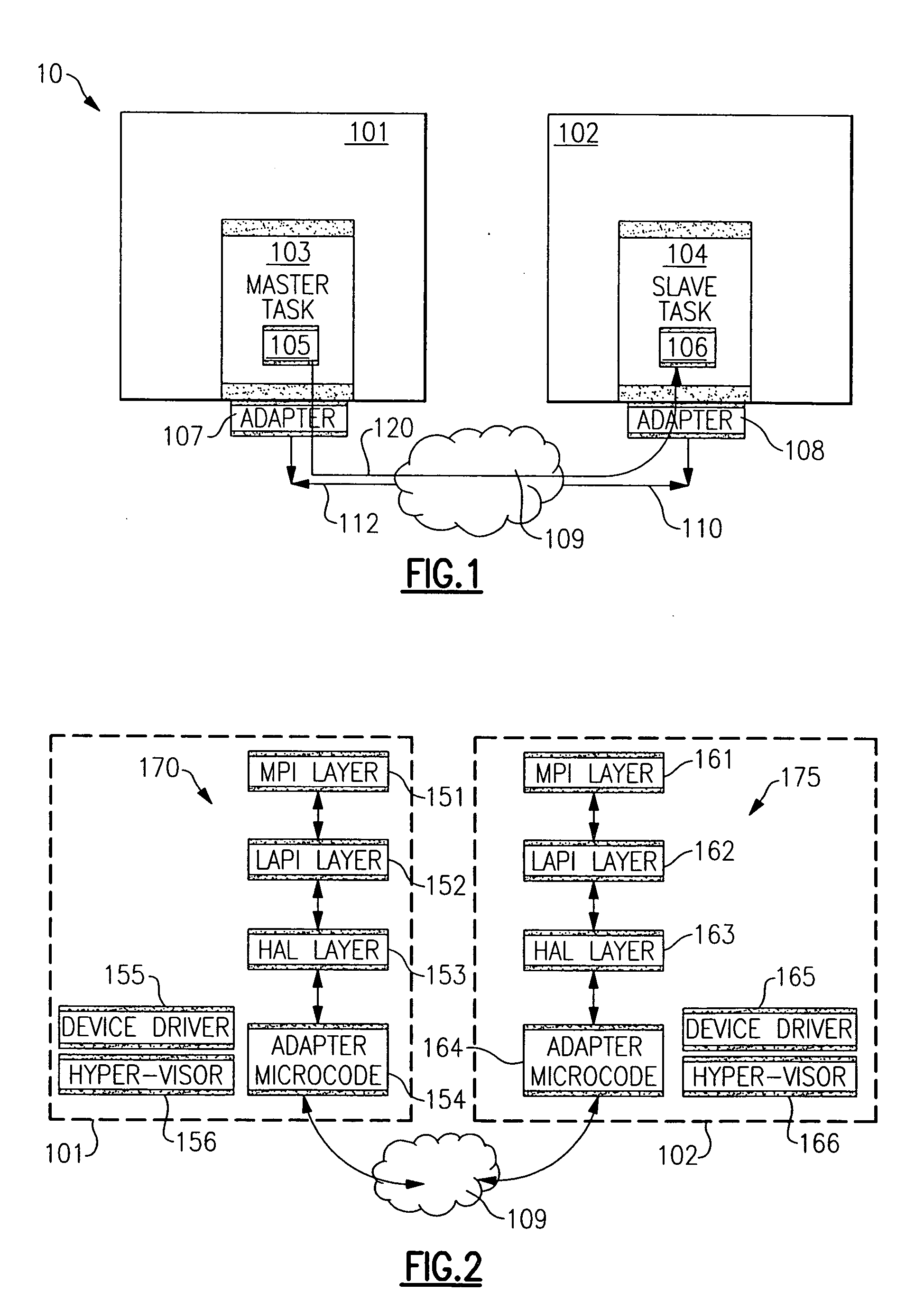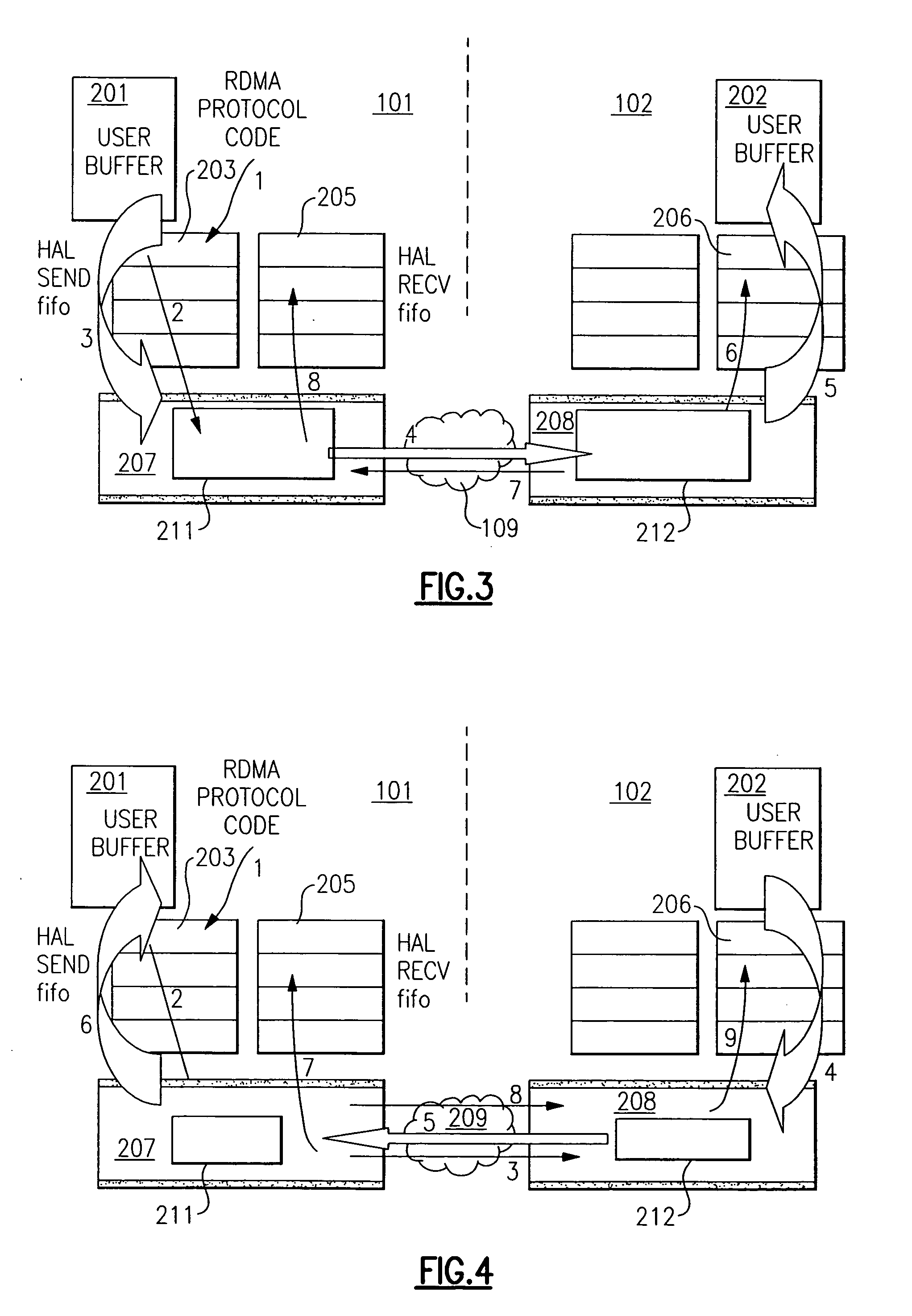Remote direct memory access system and method
a direct memory and access system technology, applied in the field of remote direct memory access system and method, can solve the problems of insufficient capability, inability to support the characteristics of packet transport through a network were considered too unreliable to permit rdma operations in such types of networks, etc. problem, to achieve the effect of facilitating packet receipt in other than the order of transmission, prior art rdma schemes cannot tolerate packet receip
- Summary
- Abstract
- Description
- Claims
- Application Information
AI Technical Summary
Benefits of technology
Problems solved by technology
Method used
Image
Examples
Embodiment Construction
[0017] The advantages of using RDMA are manifold. RDMA can be used to reduce the number of times data is copied when sending data from one node to another. For example, some types of computer systems utilize staging buffers, e.g., first-in-first-out (FIFO) buffers, as a repository for transferring commands and data from a local memory of the node to be transferred to the network by a network adapter, and as a repository for commands and data arriving from the network through the network adapter, prior to being copied to the node's local memory. Using RDMA, the data to be transferred need no longer be copied into a send staging buffer, e.g., a send FIFO, prior to being copied into the memory of the network adapter to create outgoing packets. Instead, by use of RDMA, the data is copied directly from the task address space into the adapter memory, avoiding the additional copy.
[0018] Likewise, using RDMA, the data being received need no longer be copied into a receive staging buffer, e...
PUM
 Login to View More
Login to View More Abstract
Description
Claims
Application Information
 Login to View More
Login to View More - R&D
- Intellectual Property
- Life Sciences
- Materials
- Tech Scout
- Unparalleled Data Quality
- Higher Quality Content
- 60% Fewer Hallucinations
Browse by: Latest US Patents, China's latest patents, Technical Efficacy Thesaurus, Application Domain, Technology Topic, Popular Technical Reports.
© 2025 PatSnap. All rights reserved.Legal|Privacy policy|Modern Slavery Act Transparency Statement|Sitemap|About US| Contact US: help@patsnap.com



